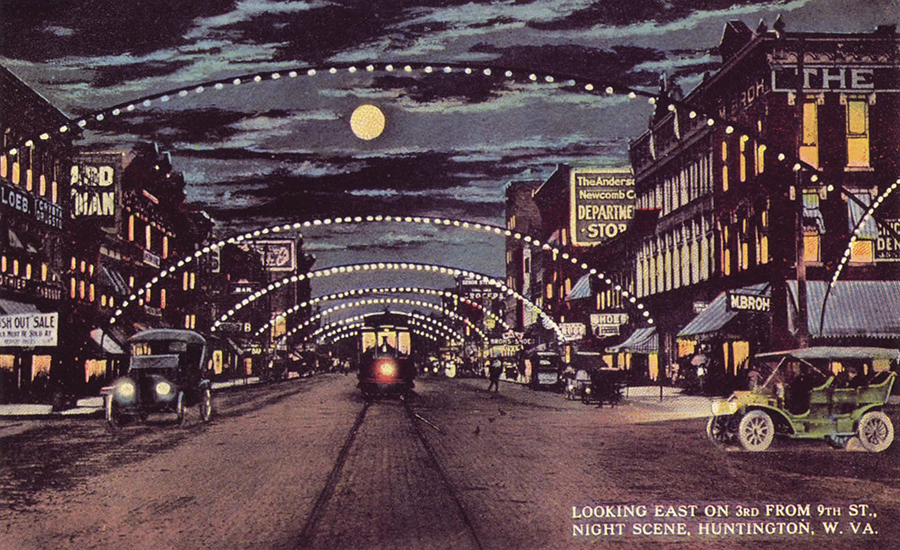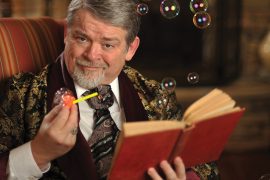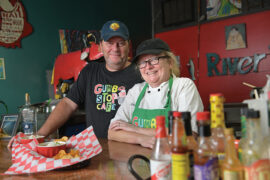A postcard gallery of the Jewel City
By Deborah Novak and John Witek
HQ 23 | WINTER 1996
While the Huntington of tin lizzies and clanging streetcars has faded from memory, it survives in a profusion of postcard images depicting the young city’s vigorous growth. Pictures by souvenir company photographers, hand-tinted in Germany or air-brushed in Chicago, capture its broad thoroughfares and imposing edifices with the magic of moments frozen in time.
In a night scene looking east from Ninth Street, wispy clouds and a painted moon overhang arcs of street lights lending a festive air to Third Avenue, where lamps burn late in the windows of Broh Brothers Mammoth Clothing House. Across the street, competitor Wm. Loeb advertises a “Push Out Sale.”
“Effie is teaching in Huntington,” Etta has written to Mina in this “postal” dated September 12, 1916. “How’s your Johnny? Ha.”

The Cabell County Courthouse was ten years old when this card was posted in 1 912. Seen in this “Bird’s Eye View” are the broad avenues for which the city was famous in an era of cramped roads and muddy, rutted byways.

This 1926 monument to James Lewis Caldwell beautified Gobbler’s Knob until it was demolished in the 1940s. Today, greatgranddaughter Liza continues the family tradition of civic accomplishment by restoring downtown’s Caldwell Trust Building and St. Nicholas Hotel.
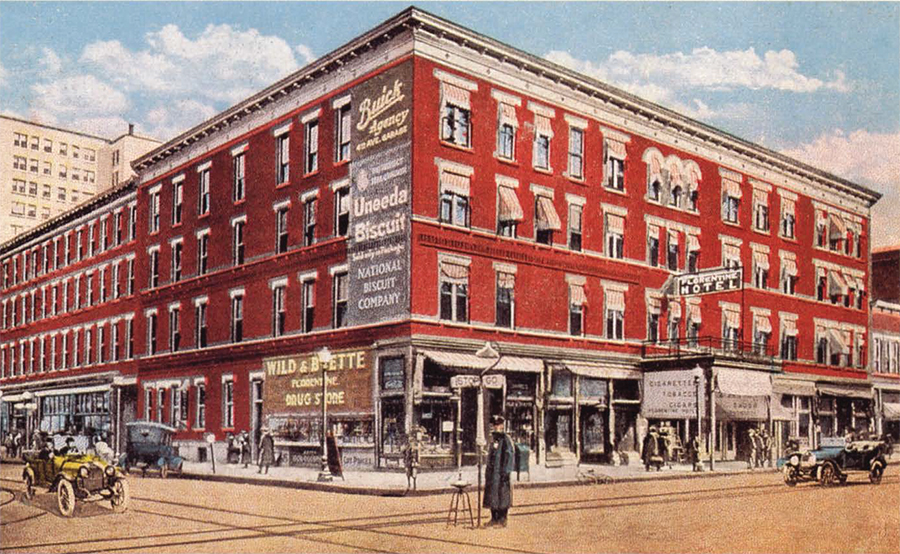
Erected in 1887, the Florentine was the place where men talked politics, while couples courted over cherry phosphates at Wild and Boette’s corner drugstore. At the intersection of Fourth Avenue and Ninth Street an unidentified policeman serves as a human traffic signal.

Fourth Avenue’s development was encouraged by the construction of the Hotel Frederick in 1906, when Third Avenue was still the bustling business boulevard.
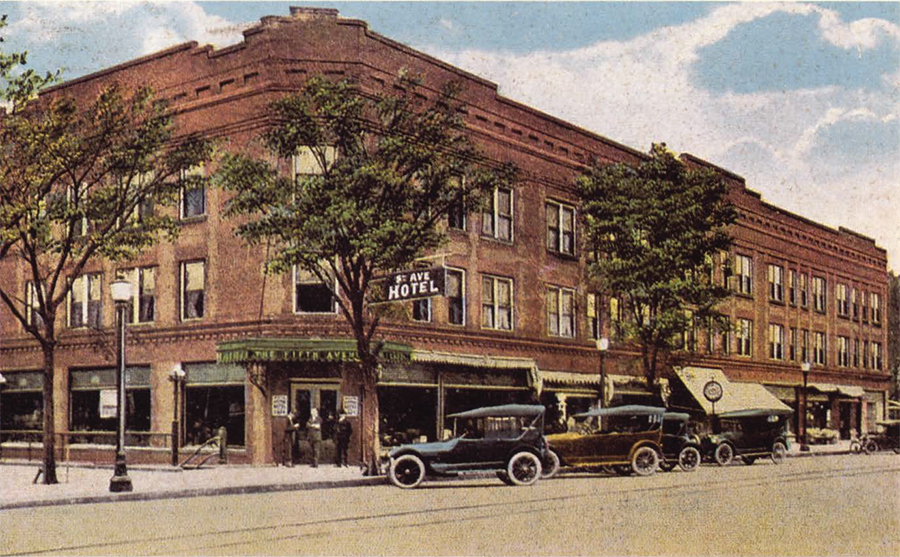
Traveling salesmen called “Drummers” made popular hotels like The Fifth Avenue their headquarters. They spread out into the country by day, returning at night to their cozy rooms in Huntington.
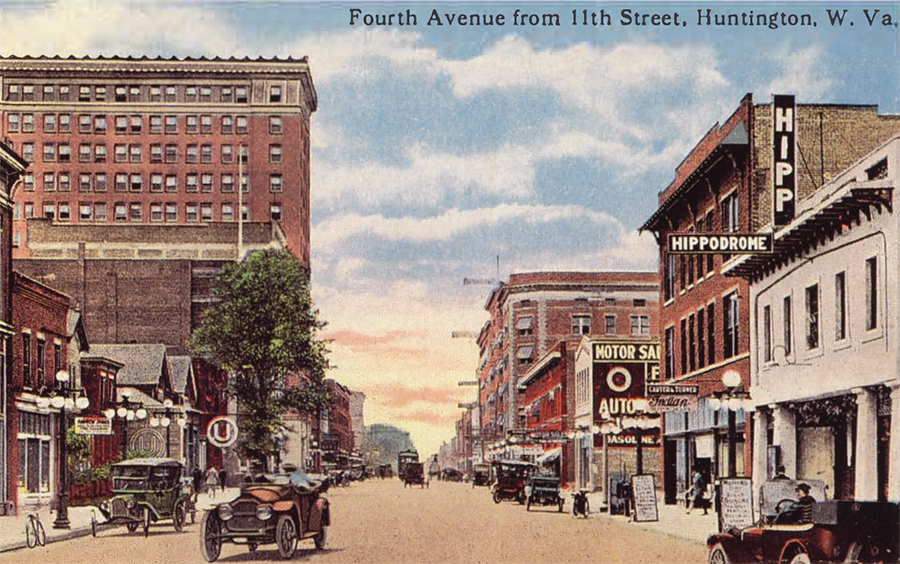
A visitor sent this Fourth Avenue view to a chum in Chicago in July of 1920. In the foreground is the Hippodrome, one of several vaudeville houses in town.
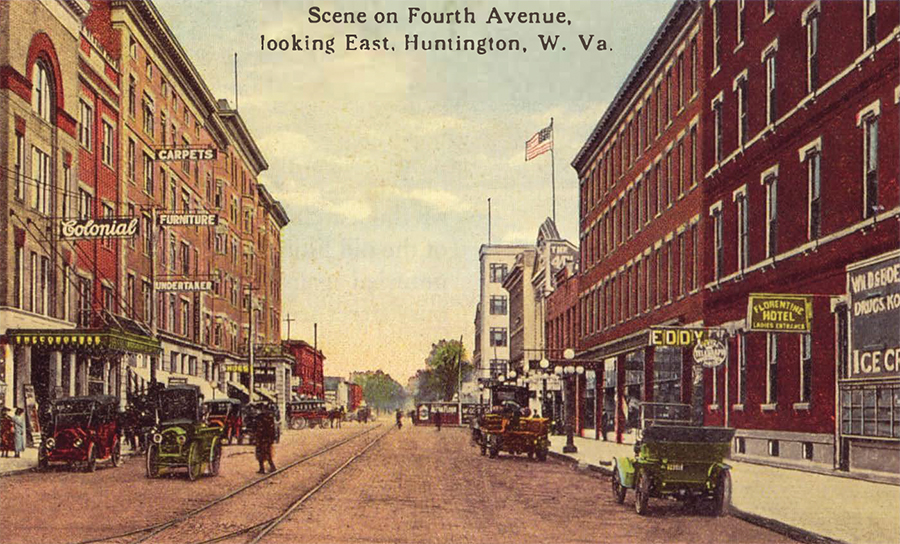
Theater row during the Great War. The Colonial, between Ninth and Tenth Streets, was a popular venue for two-reelers. Note the Florentine Hotel’s “Ladies Entrance.”
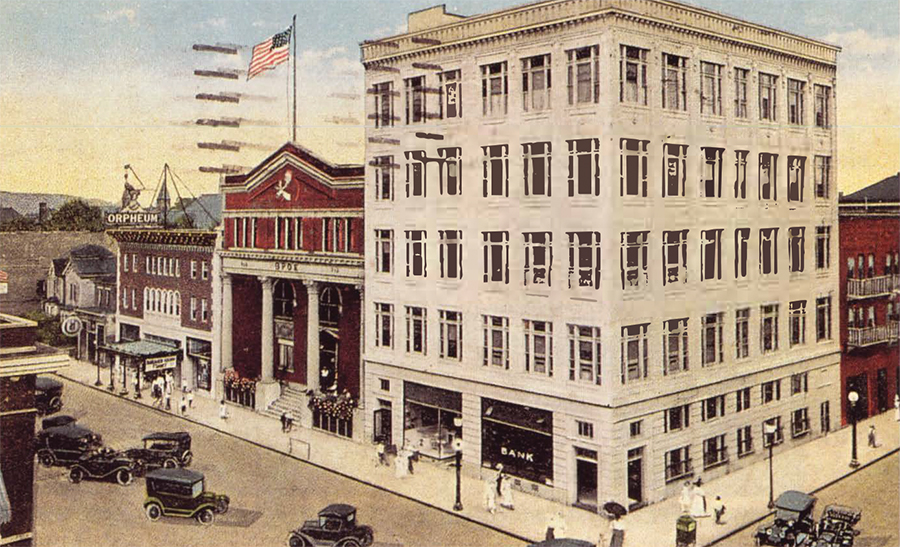
Burger King has replaced the old Day and Night Bank and The Orpheum has become the Cinema. Only the Elks are still in residence.
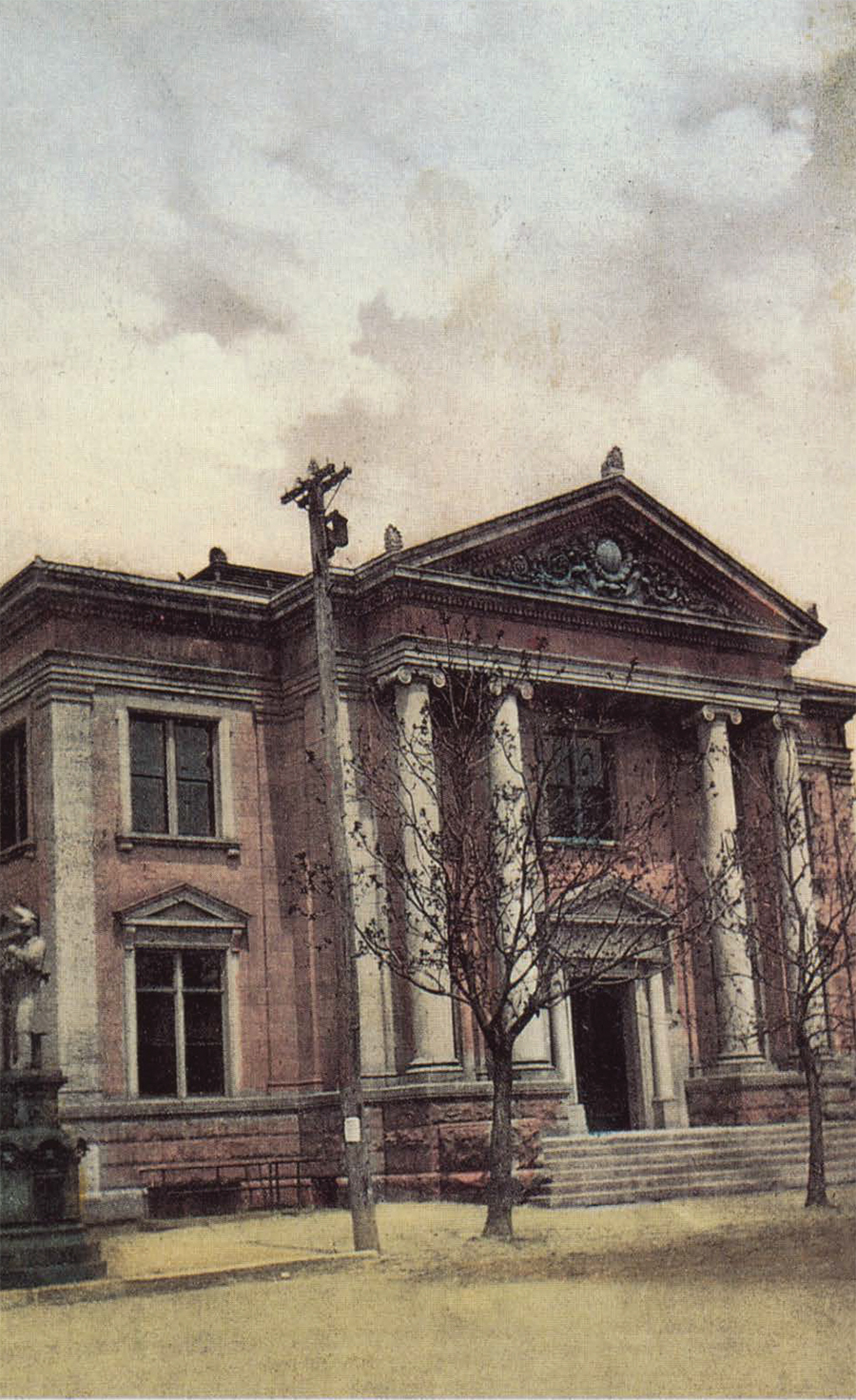
Built at a cost of $35,000, Andrew Carnegie’s Library was the city’s stateliest building when its doors opened in 1902. The monument to the civil war soldier in front of the library vanished mysteriously 80 years ago.
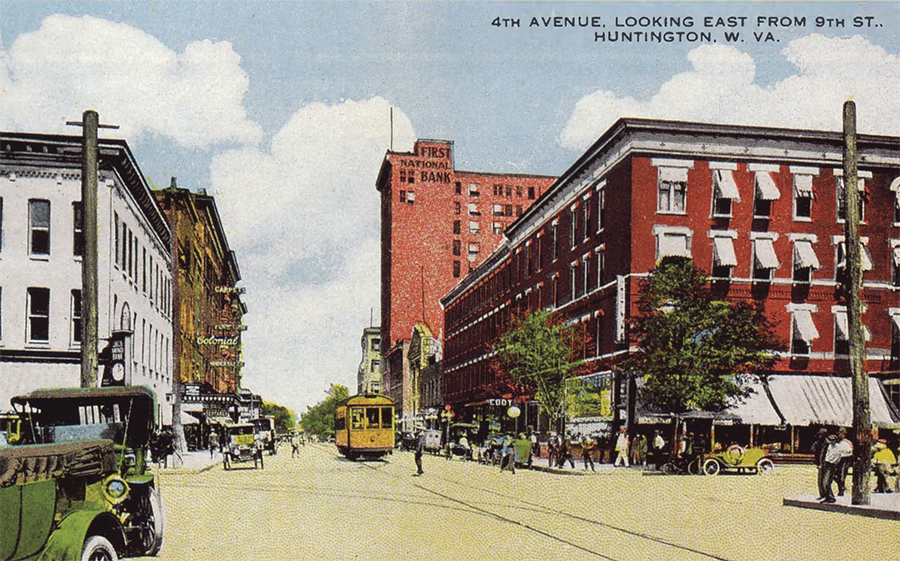
The First National Bank dominated Fourth Avenue for a decade. Twelve stories and 156 feet high, it was built in 1914 on property owned by The Old Methodist Church. The awnings of the old Florentine Hotel are unfurled against the sun, and the busy street seems to swelter in this sweeping view from the early twenties.
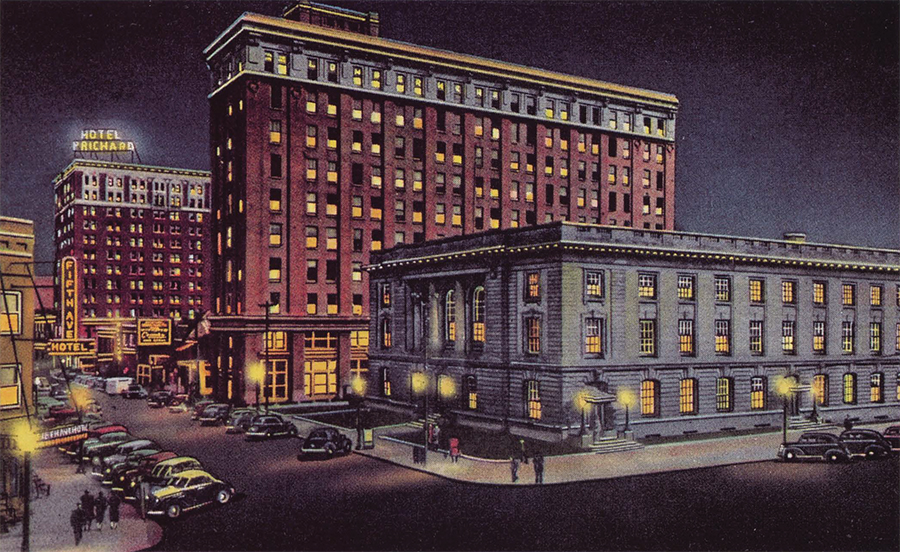 Photo-retouchers created this visual fantasy in the 1940s when they turned day into night and airbrushed in figures, cars and the glow of street lamps along Fifth Avenue.
Photo-retouchers created this visual fantasy in the 1940s when they turned day into night and airbrushed in figures, cars and the glow of street lamps along Fifth Avenue.
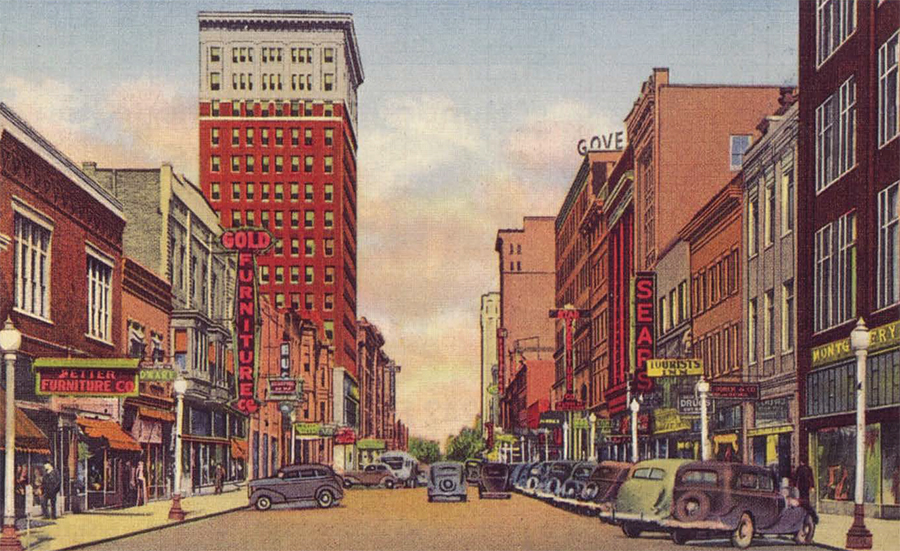
“Hello Mother,” reads the Palmer Method pen script on the back of this downtown view, circa 1940. “We arrived at Huntington at 5: 10 this evening. One flat tire was the only trouble we had. It surely was hot riding. Peggy says she wants to go home and sleep in her little bed. As ever, Ray and Gin.”

